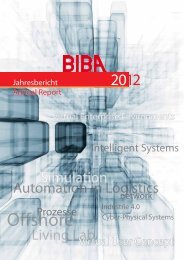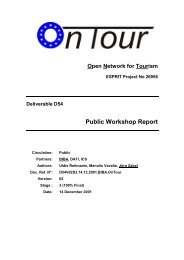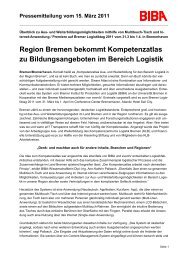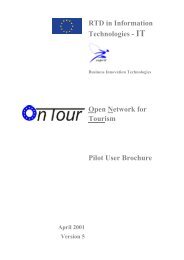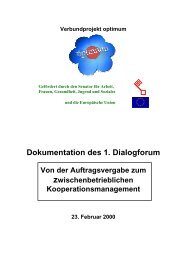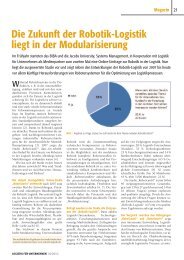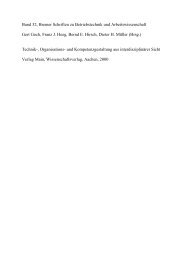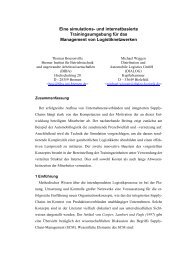PDF Version - Biba
PDF Version - Biba
PDF Version - Biba
You also want an ePaper? Increase the reach of your titles
YUMPU automatically turns print PDFs into web optimized ePapers that Google loves.
D13 OnTour: ESPRIT Project No. 26956ticular attention was given to the information provided by a representative of the Germancompany “Bewotec”, who had been invited to present a new product offering access tovarious computerised reservation systems (CRS) via the Internet.Based on the drawback analysis as well as the information by Bewotec a first draft conceptof the to-be situation has been worked out in a brainstorming session with the OnTourpartners. Finally, the task schedule and structure of D13 have been defined.Step 2: Derivation of specific requirementsIn the second step of task 1.3 the specific user requirements have been identified. It hasproved not to be necessary to prepare a questionnaire for capturing the user requirements,because most of the information could be derived from the previous questionnaires used bythe drawback analysis. In case of an open question the respective industrial partner hasbeen directly contacted .Step 3: Review of specific requirementsSince not all industrial users were directly involved in capturing the specific requirements,this intermediate review should ensure that all needs and ideas of the users are considered.The specific requirements of each partner should comprise aspects like, software functionality,information flow, security aspects, smart card, graphical user interface, etc.Step 4: Extraction of generic requirementsBased on the output of step 3 the generic requirements have been extracted from the companyspecific ones and described in an abstract way. By analysing the specific requirementscommon patterns have been detected which makes it possible to model independentlyfrom the type of business.Step 5: Modelling of the to-be situationParallel to the extraction of the generic requirements step 5 has been initiated based on thespecific requirements and the conceptual arrangements developed in step 1. The analysis ofthe to-be situation results in a neutral reference model in which the consequences of therequirements concerning the co-operation of the different actors in the value chain are explainedby means of IDEF0 figures 1 . Additionally, this step comprises the generation of adraft OnTour architecture and the estimation of the expected benefits.Step 6: Review of requirements and reference modelTo ensure the completeness and correctness of the D13 content all partners have beenasked to review the captured requirements as well as the modelled to-be situation. By addingthe partner’s comments the final version of the document labelled “D13 – Definition ofTo-be Situation” could be finished.1 The IDEF0 approach has already been introduced in [D11].7 June 1999 D13V04S3 Page 8




